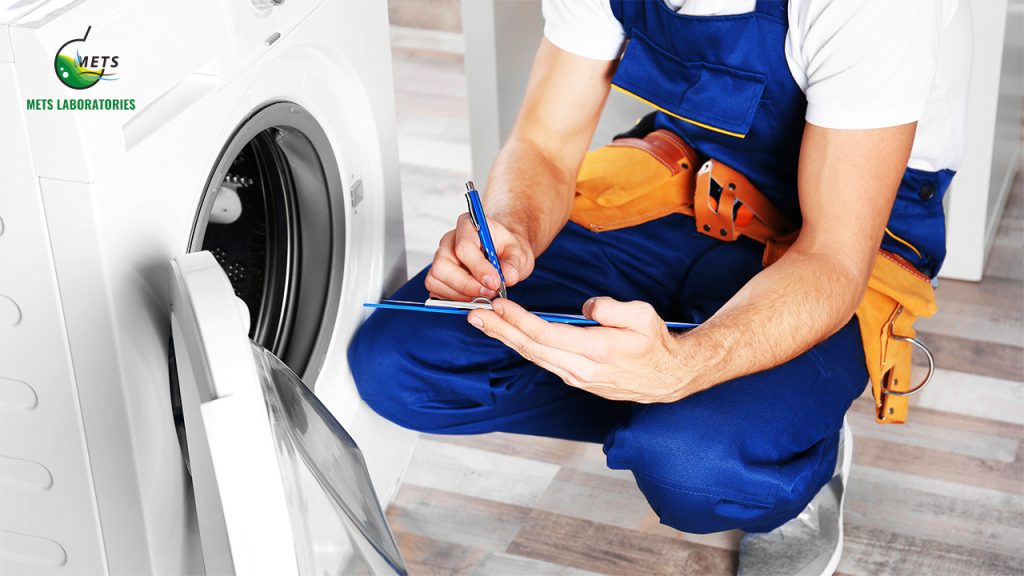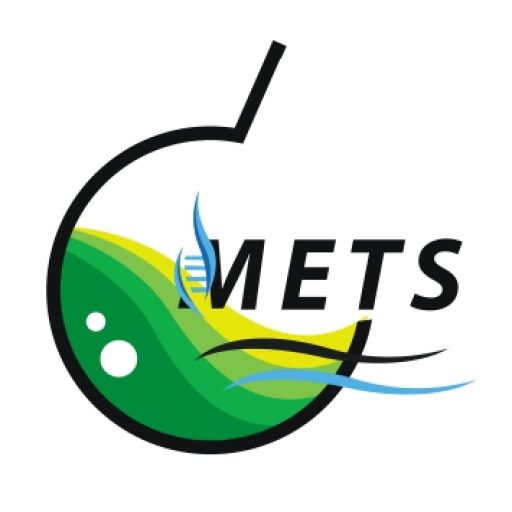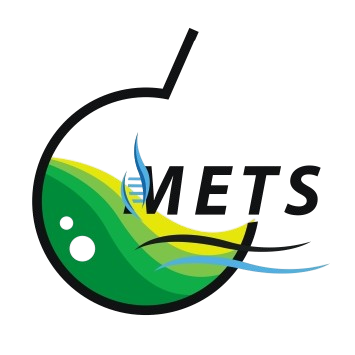
Hardline Product Testing – METS Laboratories
Wood and wooden product testing is essential for ensuring quality, safety, and durability in industries such as construction, furniture manufacturing, interior design, and packaging. This systematic evaluation process verifies that wood-based materials meet structural, aesthetic, and functional requirements while complying with international standards.
The science of wood testing encompasses mechanical, physical, and chemical assessments to determine strength, moisture resistance, dimensional stability, and fire retardancy. Standardized testing methods, such as ISO 13061 for physical properties and ISO 3131 for density, provide critical data for engineers and manufacturers.
Advanced techniques, including microscopic analysis (ISO 3129) and spectroscopic methods, help assess wood composition, grain structure, and defects. Non-destructive testing (NDT) methods, such as ultrasonic testing (ISO 12743) and thermal imaging, allow for thorough inspection without damaging the material.
Additionally, specialized tests evaluate fire resistance (ISO 11925), termite resistance (ISO 22190), and formaldehyde emissions (ISO 12460), ensuring compliance with environmental and safety regulations.
Importance of Wood and Wooden Products Testing
Wood and wooden products are widely used in furniture, flooring, construction, and decorative applications. Rigorous testing ensures:
- Mechanical Strength & Durability – Evaluates load-bearing capacity, hardness, and wear resistance.
- Moisture & Dimensional Stability – Tests resistance to warping, swelling, and shrinkage.
- Fire & Termite Resistance – Assesses safety and longevity in different environments.
- Adhesive & Coating Performance – Ensures bonding strength and finish durability.
- Environmental Compliance – Checks for harmful emissions (e.g., formaldehyde).
- Aesthetic & Structural Quality – Verifies grain consistency, defects, and finishing.
Key Testing Categories:
- Mechanical Testing
- Physical & Dimensional Testing
- Chemical & Emission Testing
- Non-Destructive Testing (NDT)
- Fire Resistance Testing
- Biological Resistance Testing
- Furniture & Fixture Safety Testing
Different Types of Wood and Wood-based Products
- Natural Wood
- Hardwoods (Oak, Teak, Mahogany) – High density, used in furniture and flooring.
- Softwoods (Pine, Cedar, Spruce) – Lightweight, used in construction and paneling.
- Engineered Wood Products
- Plywood (ISO 12465) – Layered wood veneers bonded with adhesives.
- MDF (Medium-Density Fiberboard, ISO 16895) – Fine wood fibers with resin.
- Particleboard (ISO 8203) – Compressed wood chips and adhesive.
- OSB (Oriented Strand Board, ISO 16893) – Strands bonded in cross-oriented layers.
- Wooden Furniture & Fixtures
- Chairs, tables, cabinets, doors, and flooring.
Purpose of Wood and Wooden Products Testing
- Quality Assurance – Verifies Compliance with ISO 13061 (Physical Properties) and ISO 16999 (Particleboard) Standards
Purpose: Ensures wood and wood-based products meet industry specifications for structural integrity, dimensional accuracy, and performance.
Key Tests:
- Density (ISO 13061-1): Measures mass per unit volume to classify wood grades.
- Moisture Content (ISO 13061-2): Determines water percentage, affecting stability and strength.
- Particleboard Quality (ISO 16999): Evaluates uniformity, density, and adhesive bonding in engineered wood.
Significance: Prevents defects like warping, delamination, and weak joints in furniture and construction materials.
- Strength & Durability Assessment – Tests Bending Strength (ISO 3133), Hardness, and Impact Resistance
Purpose: Determines how wood withstands mechanical stress, ensuring longevity in load-bearing applications.
Key Tests:
- Static Bending (ISO 3133): Measures maximum load before fracture (critical for beams and flooring).
- Janka Hardness (ISO 3350): Evaluates resistance to denting and wear (important for flooring).
- Impact Resistance (ISO 3348): Simulates sudden shocks (e.g., dropping heavy objects on furniture).
Significance: Ensures safety in furniture, stairs, and structural components.
- Moisture & Weather Resistance – Evaluates Swelling (ISO 4859) and Water Absorption
Purpose: Assesses dimensional stability in humid or wet conditions.
Key Tests:
- Water Absorption (ISO 4859): Submerges samples to measure swelling and warping.
- Cyclic Humidity Testing: Simulates seasonal changes to check for cracks or deformation.
Significance: Prevents failures in outdoor furniture, decking, and kitchen/bathroom fixtures.
- Fire Safety Compliance – Checks Flame Spread and Ignition Resistance (ISO 11925)
Purpose: Validates fire retardancy for building codes and public safety.
Key Tests:
- Flame Spread Test (ISO 11925-2): Measures how quickly fire travels across a surface.
- Ignition Resistance (ISO 5657): Determines the temperature required to ignite wood.
Significance: Critical for interior cladding, public furniture, and escape routes.
- Eco-Friendly Certification – Measures Formaldehyde Emissions (ISO 12460) for Indoor Safety
Purpose: Ensures low VOC emissions to protect indoor air quality.
Key Tests:
- Formaldehyde Release (ISO 12460-5): Uses a climate chamber to quantify emissions.
- CARB Phase 2 / EPA TSCA Compliance: Mandatory for products sold in the U.S. and EU.
Significance: Reduces health risks (e.g., respiratory issues) from plywood, MDF, and laminates.
- Termite & Fungal Resistance – Ensures Long-Term Durability (ISO 22190, ISO 846)
Purpose: Tests resistance to biodegradation in high-moisture or tropical environments.
Key Tests:
- Termite Resistance (ISO 22190): Exposes wood to termites to assess damage levels.
- Fungal Decay (ISO 846): Inoculates samples with mold/fungi to observe degradation.
Significance: Extends lifespan of outdoor structures, flooring, and marine applications.
- Furniture Safety & Stability – Tests Load Capacity and Ergonomic Design (ISO 7170, ISO 7173)
Purpose: Guarantees furniture can withstand daily use without collapsing.
Key Tests:
- Static Load Test (ISO 7170): Applies weight to chairs/tables to check deformation.
- Impact Test (ISO 7173): Drops weights onto surfaces to simulate real-world abuse.
- Tipping Resistance (ASTM F2057): Ensures cabinets/drawers won’t tip over.
Significance: Prevents accidents, especially in children’s furniture and office fixtures.
Wood and Wooden Products Testing Parameters
Test Type | ISO Standard |
Bending Strength | ISO 3133 |
Compression Test | ISO 3787 |
Hardness Test | ISO 3350 |
Impact Resistance | ISO 3348 |
Test Type | ISO Standard |
Density | ISO 3131 |
Moisture Content | ISO 13061-1 |
Swelling Test | ISO 4859 |
Test Type | ISO Standard |
Formaldehyde Emissions | ISO 12460 |
Adhesive Bonding | ISO 12465 |
Test Type | ISO Standard |
Ultrasonic Testing | ISO 12743 |
Thermal Imaging | ISO 6781 |
Test Type | ISO Standard |
Flame Spread Test | ISO 11925-2 |
Test Type | ISO Standard |
Termite Resistance | ISO 22190 |
Fungal Resistance | ISO 846 |
Why choose METS Laboratories for Acoustic Testing?
NABL accredited, METS LABORTORIES INDIA PVT.LTD can test to a variety of the established methods (e.g., ISO, ASTMD, AOAC, APHA, FSSAI, BIS,)
- Our laboratory conducts testing on a wide range of products, materials, and components to verify compliance with standards, specifications, and regulatory requirements. Our team is happy to provide expert advice and guidance to ensure the appropriate water testing is carried out for your needs.”
- “Our dedicated, experienced, and friendly team is here to help—providing expert knowledge, guidance, and access to cutting-edge water testing capabilities and technologies in our laboratory.”
- We conduct comprehensive product evaluations for appearance, quality, and performance. Our technical support network provides expert guidance—answering questions, interpreting results, and assisting with quality assurance program management.”
- “We participate in inter-laboratory proficiency testing and comparative analyses to ensure accuracy, reliability, and compliance with industry standards.”
- “We implement and maintain rigorous ISO/IEC 17025:2017 accreditation, ensuring internationally recognized standards for testing competence, measurement accuracy, and operational excellence in every analysis.”
- “We maintain strict customer confidentiality by treating all data as proprietary information.”
What We Ensure?
- Data Integrity: Every result is generated and verified under strict quality assurance.
- Compliance: All tests conform to the latest regulatory and industry-specific guidelines.
- Transparency: Clear, easy-to-understand reports and consultation support.
- Confidentiality: Your data remains secure, private, and protected.
- Environmental Stewardship: Our labs follow eco-friendly practices and aim to minimize testing-related waste and emissions.
Who It’s For?
- Manufacturers, importers, and distributors of EEE products (e.g., electronics, cables, circuit boards, batteries).
- Industrial Facilities: To monitor effluents, emissions, and workplace safety
- Construction and Real Estate: For soil contamination, water logging, and indoor air quality
- Municipal Corporations: To assess urban air and water quality
- Schools, Hospitals & Hotels: For ensuring safe indoor environments
- Agricultural Communities: To test irrigation water and soil health
- NGOs & Research Institutions: For pollution studies and policy advocacy
- Citizens & RWAs: For local monitoring and complaint-based testing
Protect Consumers. Satisfy Authorities. Boost Market Confidence.
In today’s sustainability-driven world, businesses are held accountable by customers, investors, and regulators alike. METS Laboratories empowers you to:
• Protect your workforce and surrounding communities
• Achieve compliance with CPCB, SPCB, MoEF&CC, WHO, and ISO standards
• Build a reputation as an environmentally responsible brand
• Avoid costly penalties and legal action due to non-compliance
• Earn stakeholder trust with verified environmental claims and ESG reporting
Environmental testing isn’t just a legal formality—it’s a strategic asset.
Frequently Asked Questions
How do I book a test?
You can contact METS Laboratories via phone, email, or our website to schedule sampling or drop off a sample at our facility.
Is your lab accredited?
Yes, METS Laboratories is accredited under ISO/IEC 17025:2017.
How long does it take to get results?
Turnaround time depends on the parameters, but standard reports are typically delivered within 3–7 working days.
Do you provide on-site sampling?
Yes, we have trained field teams who follow strict SOPs for on-site sample collection.
Can I get help understanding the report?
Absolutely. We offer report interpretation and guidance on corrective actions or next steps.
What locations do you serve?
We serve clients across India and can coordinate with international partners when required.
Can you help with regulatory approvals?
Yes, our test reports are accepted by government authorities, and we can assist in documentation for environmental clearances.





